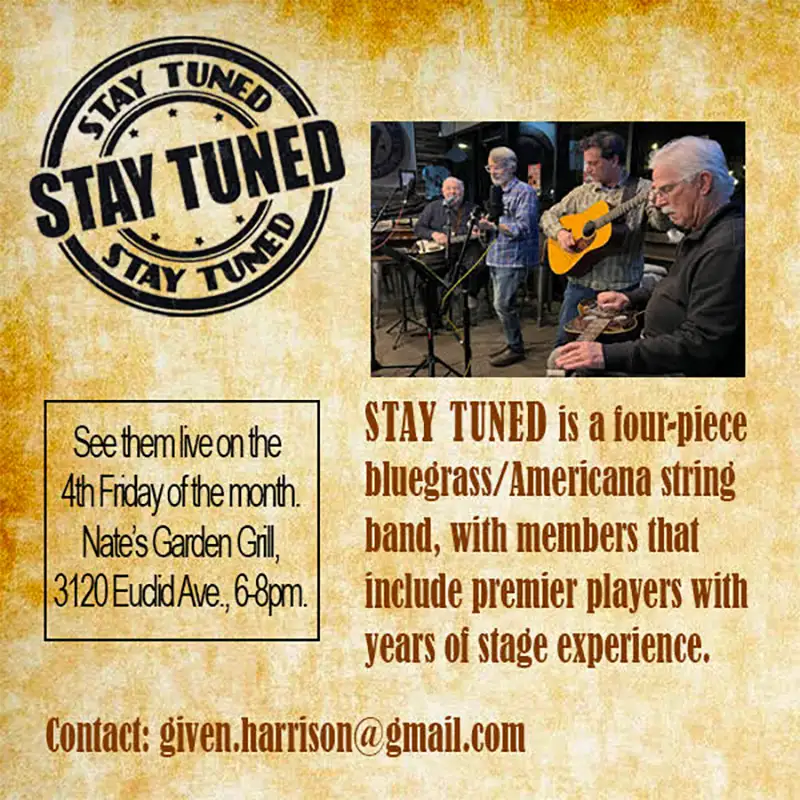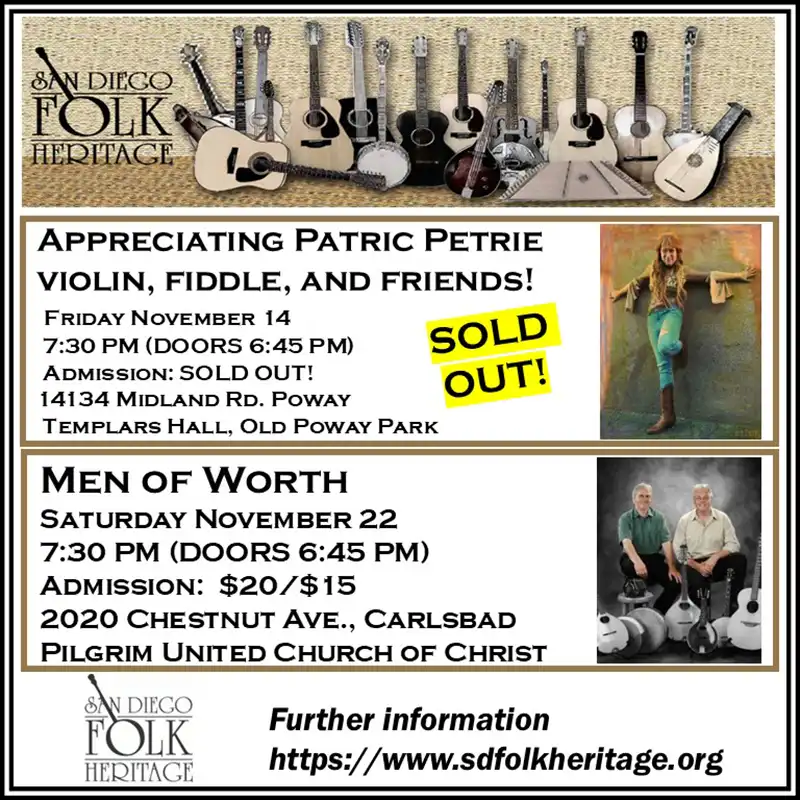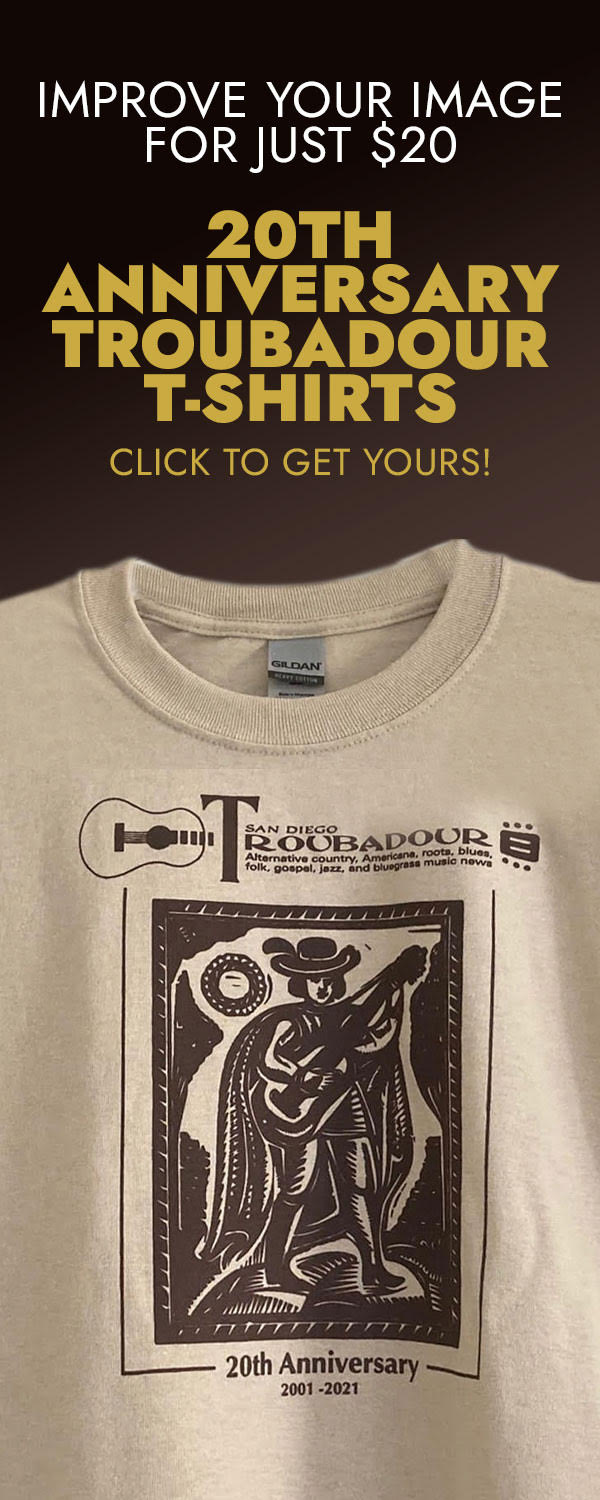Bluegrass Corner
Bluegrass Music in a Changing World
No doubt about it, the world continues to change. Our means of communication, our technology, our understanding of science, medicine, natural systems, and more. Even the way we produce and listen to music continues to change. Let’s take a look at some of the ways in which bluegrass music and the culture around it has both changed, and refused to change, in an evolving world. I think we can feel good about what we find.
Making Bluegrass Music: the Beginning. Bluegrass music as a genre is relatively young, having been invented by Bill Monroe in the 1940s. At that time bluegrass music was played exclusively on acoustic instruments because electric instruments were a rarity, as was electricity itself in rural Kentucky and Tennessee where the music took root. At that time the main vehicle for presenting bluegrass music to the public was live performances, typically for small rural audiences and often at dances called “barn dances.” Live AM radio played on local stations was also a key outlet for sharing early bluegrass music.
Bill Monroe and his Bluegrass Boys band and later the seminal Flatt and Scruggs band would often show up, play live on the local AM radio station and then move on. That was about it–your chance to hear bluegrass music was limited to a concert or dance performance by a band traveling through your town or being lucky enough to live where occasional radio programing presented the music live.
Bluegrass music recordings were also made in these early days, but to a limited extent and on a limited number of record labels, typically as 45s, 78s, or LPs. Recording equipment was primitive, tape-based, and the output was variable. For the listening audience addicted to the music there were long periods of waiting for the release of that next record. And, the music was primarily available in the southeast states.
The Present. Now, bluegrass music is available in a variety of formats ranging from CDs to online services like iTunes, and to a plethora of live concerts and festivals around the world. The festival movement itself started in the 1960s, creating an opportunity to perform and hear bluegrass music that did not exist in Bill Monroe’s early days. The festival season is, in many ways, the modern lifeblood sustaining the music. Here in San Diego we have the Summergrass Festival held every August attended by thousands of fans to hear top touring bands.
As a modern listener, the opportunities to partake of bluegrass music abound. No more waiting for that next record release–now there is more new bluegrass music released every year than one can digest in a lifetime. Likewise, the learning opportunities abound. Through at least the mid-1960s the main way to learn bluegrass music from the masters was to buy an LP and play it over and over, lifting the needle up and down, trying to figure out what was being played. Now, we have slow downers and a full stable of learning materials available including on-line videos, and CDs. We also have access to top teachers and players through a series of bluegrass music camps and workshops, as well through online lessons.
The Good Changes. From my perspective, most of the changes have been for the better. More bands than ever can now dedicate themselves to bluegrass music and earn a respectable living. There are more concerts, festivals, jam sessions, and learning opportunities than ever. Bluegrass music now has a worldwide following with international touring bands, the IBMA, and crosscultural sharing. There are many bands stretching the genre, like Yonder Mountain String Band, Railroad Earth, Trampled by Turtles, the Infamous Stringdusters, and more. What is available is broad and ever evolving. This is all good.
There are also some good aspects of what has not changed. If your preference is traditional, old school bluegrass music as Bill Monroe did it in the 1940s, you can find plenty of that. There is a strong contingent of the bluegrass community that favors this traditional approach to the music and it remains alive and well. There are also many, like me, who love the old traditional style but who also appreciated the modern progressive stuff as well.
It’s also true that the instruments have not changed. Bluegrass music is still mostly performed and recorded on the same acoustic instruments used by the originators, although we now hear the occasional electric bass and sometimes acoustic instruments plug in to be better heard. There is even the occasional use of drums (think Doyle Lawson and Quicksilver), to the annoyance of some.
The Not So Good. The growth and expansion of bluegrass music has created some protectionism that can create dissension within the bluegrass tribe. There are those who want to endlessly argue over what is “bluegrass” and what is not. There are purists who decry anything not done in the style of the originators–the so called “bluegrass police.” These purists feel that the progressive approach to the music will somehow harm the music’s traditional roots, or perhaps that the newer sounds will swallow and destroy the traditional. That isn’t happening, so I hope these folks can take a breath. There are others, equally rigid, who focus only on the newer approach eschewing what they see as the outdated old school approach. They, too, need to take a breath.
This tension isn’t fatal, but it can be counterproductive. It sometimes leads to fights over event programming and even tension in an audience or among performers. Bottom line, there is room in the bluegrass tribe for everyone. Everyone can hear what they prefer, study and learn as they choose, and enjoy what this wonderful form of quintessentially American music has to offer.








